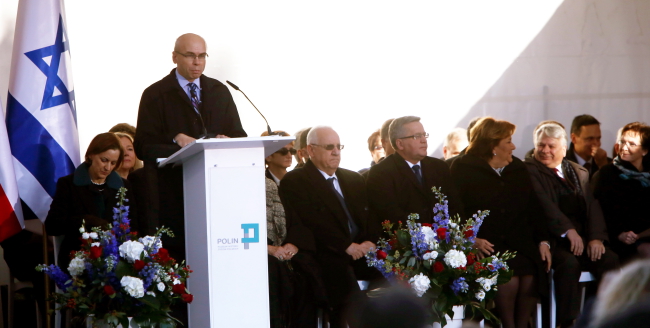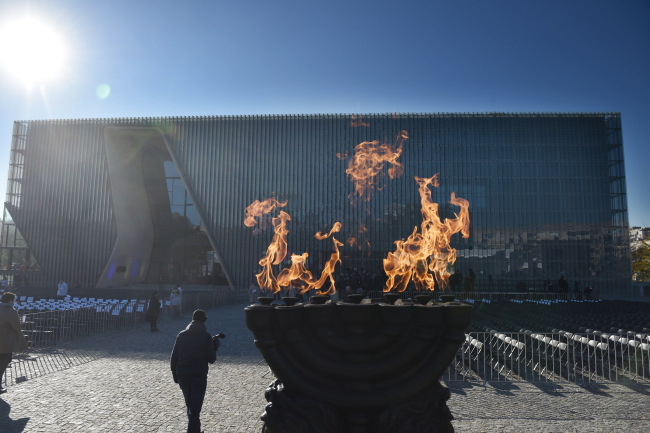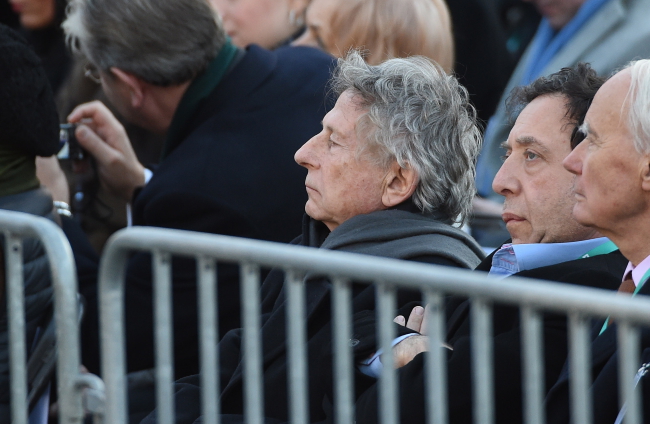
From left: Director of museum Dariusz Stola, President of Israel Reuven Rivlin, Polish president Bronisław Komorowski and wife Anna, Senate speaker Bogdan Borusewicz and PM Ewa Kopacz: photo - PAP/Tomasz Gzell
Earlier, presidents Bronislaw Komorowski and Reuvin Rivlin met for bi-lateral talks on the Russian-Ukrainian conflict, the situation in the Middle East and Polish-Israeli economic relations.
At a joint press conference at the Presidential Palace, President Rivlin, on his first trip abroad since taking office this July, said the new museum – built from international and Polish state donations at a cost of over 120 million USD - showed the “ups and downs” of the Polish-Jewish relationship and also “confirmation of a common will to build the best, most friendly and fruitful relations between Poles and Jews”.

Museum of the History of Jews in Poland in Warsaw, Tuesday: photo - PAP/Radek Pietruszka
The museum building, at 6 Anielewicza Street, on the grounds of the Nazi-occupied WWII-era Warsaw Ghetto in the Muranow district of Warsaw, was designed by Finnish architect Rainer Mahlamäki.
Mahlamäki's design covers 12,800 square metres, a third of which is given over to the main exhibition, occupying the entire lower level.

Film director Roman Polanski attends opening ceremony: photo - Radek Pietruszka
The main exhibition details 1000 years of Jewish history in Poland in eight galleries, with visitors first entering a forest representing historic lands along the Vistula River where locals first came into contact with Jewish merchants.
The exhibition also includes a mock-up of Jewish life in Warsaw between the two world wars, exhibits from the Holocaust and Warsaw Ghetto Uprising in 1943 and details of the communist state-inspired anti-Semitism of 1968, causing another exodus of Jews to Israel.
In 1939, over 3 million Jews, or around a tenth of the population, lived in Poland: not more than 300,000 survived the Holocaust.
After continued emigration since the war, an estimated 20,000 now reside in the country. (pg)
photos of museum interior by PAP/Marcin Obara